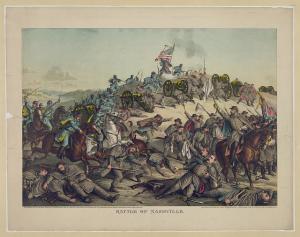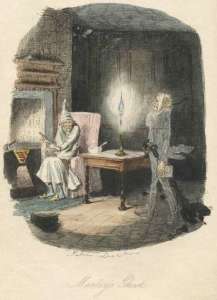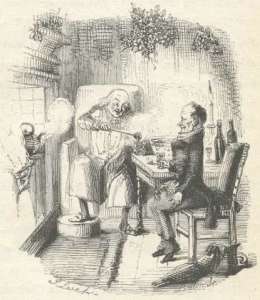As Democrat paper in the Finger Lakes region of New York State absorbed a couple of the significant events that occurred 150 years this week – the Union victory at Nashville and President Lincoln’s call for 300,000 more volunteers – it came up with some doubt about how well the war was really going for the North. From a Seneca County, New York newspaper in December 1864:
The Battle at Nashville.
The recent battle near Nashville seems to have been very disastrous to the enemy. Gen. Thomas attacked Hood and succeeded in driving him back beyond Franklin, a distance of some miles. From all the accounts received the enemy lost most of his artillery, and one fourth of his effective strength. Too much reliance, however, must not be placed on the rose-colored dispatches from that vicinity. There is no doubt but that the rebels were signally defeated, but we do not believe that Hood’s army is used up, or destroyed even for the time being. The battle, unquestionably, was a severe one, and our own loss heavy. It is reported at from three to four thousand. The enemy must have lost heavily in prisoners, if not in killed and wounded.
The sensation dispatches of victory from every quarter, must be taken with great allowance, for it is a significant fact that upon the heels of nearly all of our great victories – or reported such – comes a conscription. The back-bone of the Confederacy may be effectually broken, and it may require only a few more men – just a few more at this particular time – to disperse and utterly route the rebel armies, and possibly it may require years, and a dozen calls of 300,000 men, to finish a task deemed so trifling by our Abolition friends. No one, we venture to say, except the most ignorant of our opponents, can be made to believe that this is the last call for men.
______________________________________________________
______________________________________________________
171 years ago today Charles Dickens’ A Christmas Carol was first published.




